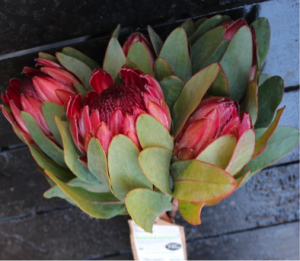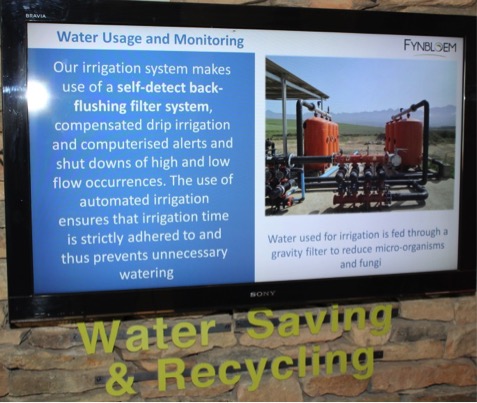Dr. David Bek, Centre for Business in Society
The negative impacts of global supply chains upon the natural environment are well documented.[i] [ii] These impacts also have knock on effects for business reputation and resilience. But many people still believe that financial returns and economic growth will be harmed if action is taken to mitigate environmental damage.
But the actions of leading firms do illustrate that implementing environmentally sustainable production practices in the UK and overseas can be achieved at the same time as building prosperous businesses. Sustainability and profitability are not mutually exclusive ideas. Rather pathways to sustainability need to be embedded by businesses and accelerated by policy makers.
Research within Coventry University’s Centre for Business in Society into the cut flower industry[iii] shows that there is plenty of evidence of innovative approaches to good environmental practices which are being adopted to the wider benefit of the bottom line and the broader economy.
Unsustainable Cut flower Production: Water, waste and carbon
The cut-flower industry has rightly been criticised due to the wide ranging negative environmental impacts that it generates.[iv] So, let’s briefly look at some of the problems created by the industry across the globe.
- Water Mismanagement: The growth of the cut flower industry has been directly linked to reductions in fresh water levels, for example in the Lake Naivasha region of Kenya, where roses are mass produced.[v] In addition, water quality can be diminished locally due to chemical runoff from flower plantations.
- Waste Management: Dealing with waste is a major challenge in the cut flower industry. A great deal of ‘green waste’ is generated in the production of flowers, as stems need to be trimmed to the precise requirements of retailers, surplus foliage removed and poor quality product disposed of. Other forms of waste are generated throughout the production and consumption process, through to the disposal of non-recyclable cellophane wrapping in household waste bins
- The carbon footprint of the industry is also a concern with flowers being flown around the world in order to ensure freshness and a long vase life. Whereas greenhouse production in cooler climates is also a major carbon producer, as is the intensive use of fertilisers and pesticides.
Recognising Good Practice
Marks and Spencer in the UK embarked upon their Plan A programme in 2007 with a view to promoting ethical and sustainable practices within their business and across their supply base.
We can see how this approach directly feeds into their relationship with overseas suppliers. South African company Fynbloem designed their cut-flower bouquet making facility to meet Plan A specifications. This includes seeking to become ‘water neutral’, which is being achieved by investing in a reed bed, building tanks for collecting rainwater, installing a dam for water recycling, as well as high-tech irrigation systems in their protea flower orchards. Fynbloem are also investing in research into the potential to send flowers by sea-freight rather than by air.
South African retailer Woolworths are also showing innovative approaches to sustainability by working in partnership with their suppliers. Measures they have adopted include removing cellophane wrapping from one of their protea bouquet lines. In marketing terms it makes sense for the retailer to reinforce the ‘naturalness’ of the home-grown blooms, by not using plastics – even their labels are made from recycled cardboard. In addition, no chemical food sachets are provided to prolong vase life. Improvements in post-harvest ‘cold chain’ technology and management by their local supplier, Intaba Flowers, mean that the flowers will look fresh for at least a week in the vase, therefore extra chemical inputs are not necessary.
Woolworth’s ‘Indigenous’ bouquet containing Protea Sylvia stems, with no cellophane wrapping and a recycled cardboard label.
So, why are these firms implementing these sustainability practices? Motivations are always complex but in these cases, whilst ‘doing the right thing’ is important, economic interests are paramount, whether in the form of cost savings or meeting consumer expectations in order to retain and grow market share.
Woolworths have a reputation for providing quality products and acting responsibly, as articulated in their ‘Good Business Journey’ sustainability strategy. Bunches of proteas with no packaging, a recycled label and no chemical sachet allow Woolworths to demonstrate their sustainability credentials to their customer-base. Furthermore, the costs of producing the bunches are reduced as there is no need to pay for cellophane packaging or sachets.
For Fynbloem reducing water inputs is critical as water is a scarce resource in the Western Cape and serious droughts are a significant threat to the business. Furthermore, more efficient water usage reduces the energy costs required to power the irrigation system. The economic argument is an important driver for the adoption of sea transport as air-freight is expensive, typically accounting forty percent of exporters’ costs. And doing things in a way that finds favour with their biggest market, Marks and Spencer, is clearly a major influence.
TV screens in Fynbloem’s packshed provide information about their water and energy usage.
Act now to mainstream sustainability
The message is clear, implementing sustainability measures can improve the bottom line by reducing costs and longer term risks and in some cases improve market share by re-assuring discerning customers. But what needs to be done to ensure that best practices become mainstream?
Voluntary measures by more innovative businesses are not enough on their own which is why action is needed by other stakeholders. Engaged consumer citizens can play a key role as businesses respond rapidly to market signals. At a macro-level government policy and sentiment is critical. The WorldWide Fund for Nature has highlighted the economic imperative for the UK Government to act upon its unfulfilled 2015 commitment to produce a ‘25 year Environment Plan’.[i]
Actions that support the development of environmentally friendly, innovative technologies and policies that favour environmental objectives and penalise unsustainable activities are critically needed. Voters and policy makers have many distractions currently, but environmental imperatives cannot be ignored any longer without serious repercussions that will affect businesses, consumers and politicians alike.
This blog is based upon a series of research projects led by Dr. David Bek and Dr. Jill Timms focusing upon the global cut-flower industry. Financial support for the research informing this blog has been provided by WWF-South Africa’s Table Mountain Fund and the research delivered with the support of the Flower Valley Conservation Trust.
[i] Ellis, K. 2017 Snap Election. Our Economy still needs an Environment Plan, WWF UK Blog.
[i] Hertwich, E. et al. 2010 Assessing the Environmental Impacts of Consumption and Production: Priority Products and Materials. A Report of the Working Group on the Environmental Impacts of Products and Materials to the International Panel for Sustainable Resource Management
[ii] Foster, C. et al. 2006 Environmental Impacts of Food Production and Consumption: A report to the Department for Rural Affairs. Manchester Business School. Defra, London
[iii] Timms, J. 2017 Valentine’s Day: Time to Consider the Ethics of Flowers we Send?, Coventry University Research Blog (CURB).
[iv] Leipold, B. and Morgante, F. 2013 The Impact of the Flower Industry on Kenya’s Sustainable Development, International Public Policy Review, Vol.7, No 2 (June 2013).
[v] Lanari, N., Liniger, H. and Kiteme, B. 2016 Commercial Horticulture in Kenya: Adapting to Water Scarcity, CDE Policy Brief, Centre for Environment and Development, University of Bern.







Comments are disabled